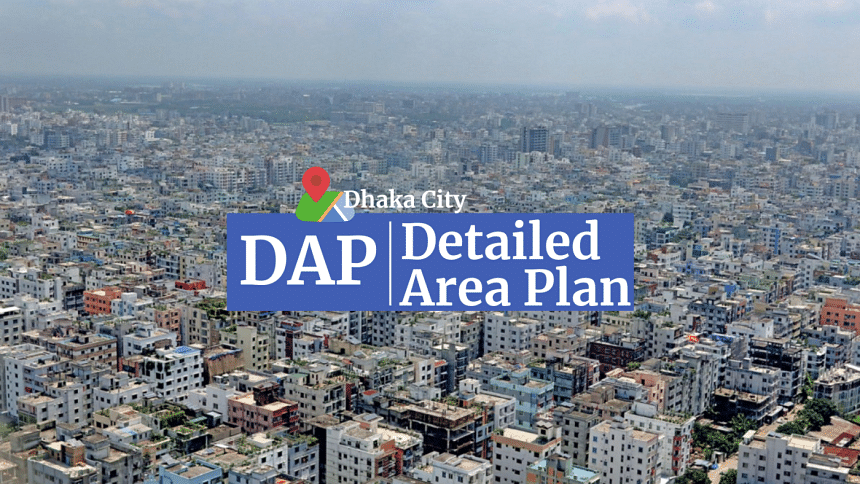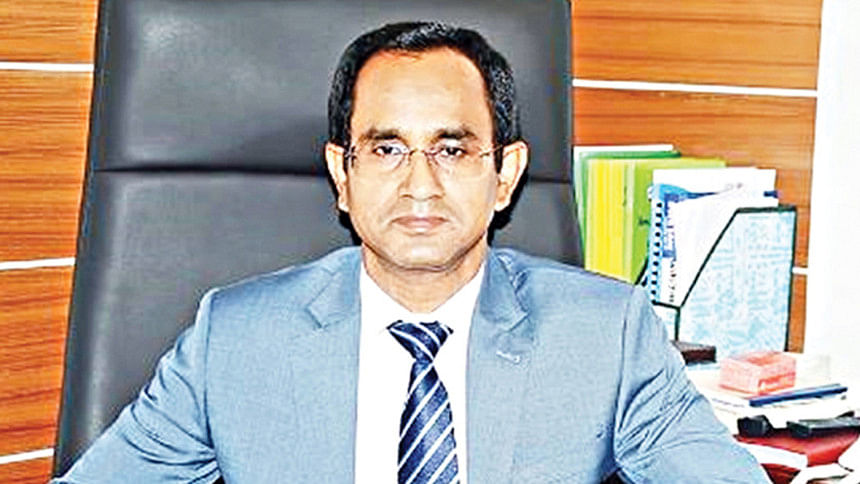Detailed Area Plan, to what end?

Dhaka's rapid expansion has prompted a clash between sustainability goals and the real estate boom. At the centre lies the Detailed Area Plan (DAP) 2022-2035 for Dhaka, with urban planners and developers offering differing views in recent interviews with The Daily Star.
DAP hurts home buyers: REHAB

Abdul Latif, Vice-president of REHAB
Regulations in the Detailed Area Plan (DAP) are limiting housing responses to meet Dhaka's growing accommodation needs, according to realtors, as they argue that current urban policies are doing more harm than good.
"The new regulations may look good on paper, but in practice, they make it almost impossible to build affordable housing," said Abdul Latif, vice-president of the Real Estate and Housing Association of Bangladesh (REHAB).
Latif, also the managing director of Basic Builders Ltd, said the floor area ratio (FAR) restrictions in the new DAP are strangling their ability to respond to Dhaka's housing needs.
The FAR defines how much floor space can be constructed on a given plot of land. Under the new rules, the maximum allowable construction has been significantly reduced in many zones across Dhaka and adjacent areas.
In some residential neighbourhoods, where buildings could previously rise ten to twelve stories, new rules now restrict heights to only four to six stories.
According to Latif, this results in a loss of more than 30 to 40 percent of buildable space, immediately rendering many housing projects financially unviable.
"The cost of land has not gone down. Construction costs are climbing. But we are being told to build fewer units per plot. That math does not work," he said.
He added that projects already in the pipeline are facing redesign requirements, cost overruns, or outright cancellation due to these policy shifts.
While policy restrictions limit supply, the economics of construction have worsened across the board. Over the past two years, the cost of steel, cement, bricks, and other core materials has risen by nearly 30 percent, driven by global supply chain disruptions, inflation, and rising fuel costs.
Meanwhile, apartment prices have remained flat in many parts of Dhaka as buyer confidence erodes amid economic uncertainty.
"Our input costs have gone up, but demand has softened. Many buyers are taking a wait-and-see approach. Some have cancelled bookings altogether," Latif said.
He pointed out that higher diesel prices and import duties have also pushed up transportation and logistics costs, further straining developers.
"We are running on razor-thin margins now. For many firms, it is no longer a profitable business," he added.
"The DAP promotes density control, but in the wrong places," Latif said. "In high-demand, working-class areas like Mirpur, Badda, and parts of Uttara, developers are being asked to reduce vertical growth. But these are the zones where the housing pressure is highest."
At the same time, luxury zones like Gulshan, Banani, and Baridhara already operate under strict regulations. In many parts of the city, designated "growth zones" still lack basic infrastructure -- such as public transport, sewage, and water -- making development there practically impossible.
Latif emphasised that a blanket policy does not work for a city as complex as Dhaka.
"You cannot apply one rule across such a diverse urban landscape. What Dhaka needs is targeted, data-driven planning," he said.
In response to growing population pressure, the government has pushed for decentralisation -- a strategy aimed at moving administrative functions and industry outside Dhaka to ease congestion.
But Latif remains sceptical. "There is talk about shifting ministries and departments to Gazipur or Purbachal. But unless those areas have the infrastructure, jobs, schools, and hospitals that people need, no one will move," he said.
He added that real decentralisation requires significant investment in public services, mass transit, and incentives for businesses to relocate.
"Right now, decentralisation is just a slogan. People move when it improves their lives -- not just because a government office has moved."
The brunt of the crisis is being felt by the middle and lower-middle classes, many of whom have saved for years in the hope of owning a small apartment in the city. With fewer new projects, reduced unit sizes, and increasing prices, that dream is rapidly fading.
"If these policies continue, housing will become unaffordable for most families in Dhaka. We are already seeing an increase in informal settlements and unplanned housing," Latif said.
He called for immediate policy adjustments that would allow flexible FAR in high-demand areas, encourage public-private partnerships, and offer incentives for affordable housing development.
"We are not opposing planning," Latif said. "We are calling for balanced, inclusive, and economically viable planning."
Calling for meaningful dialogue with stakeholders, he said, "Real estate is not just about profits. It's about people's right to shelter, dignity, and stability."
Unchecked growth not an option: BIP

Adil Mohammed Khan, President of Bangladesh Institute of Planners
The Detailed Area Plan (DAP) aims to strike a balance between development and sustainability of Dhaka, according to the Bangladesh Institute of Planners (BIP), as it says relaxing DAP guidelines to favour real estate interests would cause long-term consequences to the liveability of the megacity.
"The new DAP introduces area-based population density norms for the first time in Dhaka's history, which is essential for sustainable city planning," said BIP President Adil Mohammed Khan. "We cannot afford to let Dhaka grow unchecked any longer."
A key component of the plan is the regulation of the floor area ratio (FAR) -- the ratio of a building's total floor area to the size of the plot on which it stands.
The DAP 2022 introduces a varying FAR system from the city centre to peripheral areas based on the level of urban area as well as infrastructure, services and utility capacities of particular areas to control density and infrastructure strain.
But developers have pushed back, seeking to raise the FAR limits and revert to a uniform, plot-based system.
Such a move, Khan warns, would be disastrous.
"For example, the FAR in areas like Badda could increase from 2 to 3.4 and dwelling units per katha could increase from 1.6 to 3," Khan explained.
"That means the number of families on a two-katha (1,440 sqft) plot could double from three to six. Multiply that across hundreds of neighbourhoods, and you're looking at density levels exceeding 50,000 people per square kilometre -- well beyond what any liveable megacity should sustain."
He added that high population density not only affects comfort and convenience, but it also directly impacts safety and liveability. Many neighbourhoods in Dhaka already suffer from narrow lanes and unplanned construction. With increased density and relaxed building rules, these areas risk becoming fire hazards.
"We're seeing more cases where fire cars can't enter alleys during emergencies because the lanes are too narrow and congested," Khan said. "If we allow indiscriminate high-rise construction in these same neighbourhoods, we will make the situation worse. In a fire accident, response delays can cost lives."
According to Khan, this loss of accessibility for emergency services -- especially the fire department -- is one of the most critical dangers of poorly planned urban expansion. The consequences are not hypothetical; recent fire incidents in the capital have exposed how fatal it can be when infrastructure is ignored in favour of vertical growth.
The DAP 2022 differs significantly from its predecessor, the 2008 plan. The earlier version prioritised rapid development and was more lenient with FAR values and construction permissions.
In contrast, the updated DAP aims to strike a balance between development and sustainability, emphasising green spaces, improved infrastructure, and population control.
"We are trying to correct the mistakes of the past," Khan said. "The 2008 DAP allowed fast growth but overlooked critical issues like traffic congestion, pollution, and emergency access. This time, we want to build a city that can breathe."
"Developers may see a dip in profits initially, but these policies are necessary for the city's long-term survival," said the BIP president.
"We are not against development, we're against uncontrolled, unsafe, and unsustainable development."
He also stressed that the government is open to reviewing certain parts of the DAP to make it more viable, but not at the cost of the city's liveability and safety.
"We are willing to engage in discussions. But the core objective must remain intact to protect the future of Dhaka."
"Dhaka's growth is inevitable," Khan said. "But it must be managed. We must choose between chaotic expansion and thoughtful development. The DAP is our opportunity to make that choice."

 For all latest news, follow The Daily Star's Google News channel.
For all latest news, follow The Daily Star's Google News channel. 





Comments